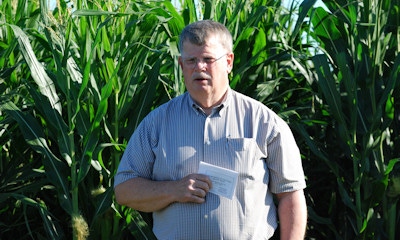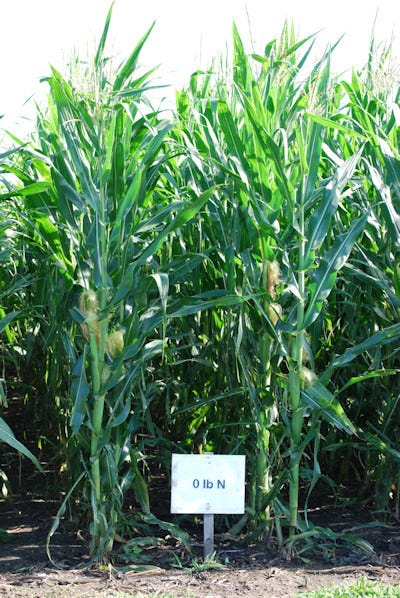
“Uniformly, around the state, this is the nicest looking corn crop I’ve ever seen in the middle of July,” says Emerson Nafziger, University of Illinois extension agronomist, during the Northwestern Illinois Agricultural Research and Demonstration Center Field Day in Monmouth.
“I’ve been here long enough not to say now that means we’re going to have the highest yields we’ve ever had,” Nafziger says.
Nafziger didn’t speculate on yield potential this year, but he did address a major contribution to high yields: meeting corn plants’ nutrient needs.

MEETING NUTRIENT NEEDS: “We use them (P and K) as an indispensable part of production,” says Emerson Nafziger, University of Illinois extension agronomist. “We have to replace what we take off. But with today’s hybrids ability to extract nutrients, if we’re at adequate soil levels, we’re very well covered.”
“This is the year everyone wants to put on late nitrogen,” Nafziger says. “But this has been a year of remarkably high mineralization of nitrogen from organic matter, and a very dark green crop in most fields.” He notes how some nitrogen models are advising farmers to add more nitrogen. “We have to stop doing this with a crop at or near pollination with such good, green color,” Nafziger says. “We can’t say it won’t provide a yield boost, but I’ve never seen a year when nitrogen deficiency is less likely to cause yield loss.”
Nafziger says ongoing research will track potential yield benefits and return on investment from late- season nitrogen applications. “Today’s hybrids do take up more nitrogen after pollination than older hybrids,” he notes. “They (today’s hybrids) take up more of everything because they have good root systems. With a crop taking up enough water to fill 250 bushels of grain, it’s certainly going to take in enough nitrogen as well, especially given that nitrogen needs drop throughout the grainfilling process.”

NITROGEN HOLDING STEADY: “We’ve had very little loss of nitrogen,” says Nafziger. “This has been a year of remarkably-high mineralization of nitrogen from organic matter.”
Until further research shows adequate return from late-season applications, Nafziger advises farmers to use the recently updated Maximum Return to N (MRTN) and Most Profitable N rate recommendations.
What about P and K?
Nitrogen isn’t the only nutrient on farmers’ minds.
Nafziger says they’ve heard a lot of feedback from farmers on phosphorus (P) and potassium (K) recommendations. Farmers feel the levels are too old and too low for today’s high-performing hybrids and yield levels.
“There is absolutely no evidence that soil test P and K levels used for the past 40 years are too low for today’s ‘high-yield’ production,” Nafziger explains. He notes the “book value”, or the guidelines most companies use to determine how much P and K the crop has removed, are “20% higher than average removal levels”.
What about other micronutrients? Nafziger says as long as pH is maintained, nutrients other than N-P-K are adequate in nearly all soils.
About the Author(s)
You May Also Like




